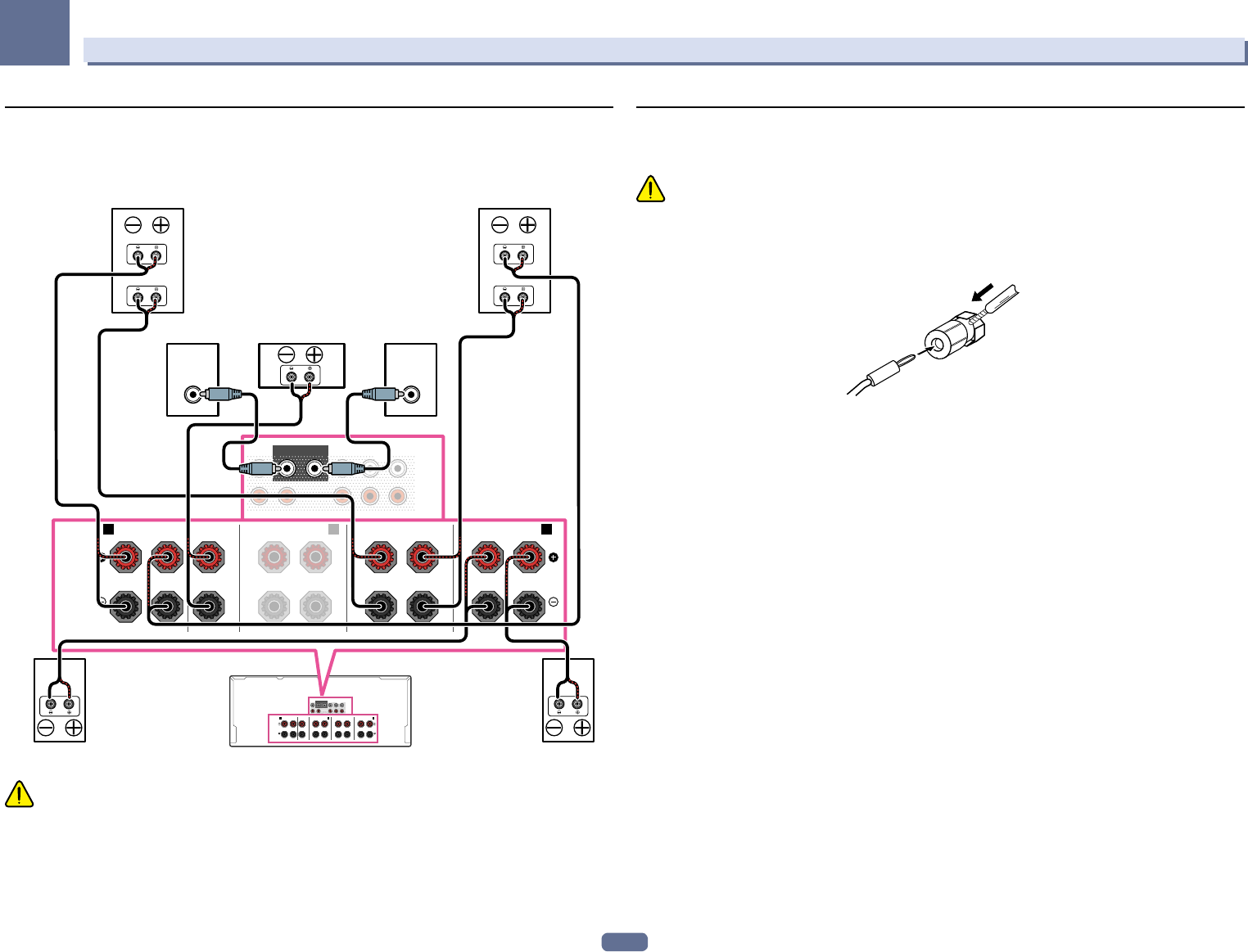
22
03
Connecting your equipment
Bi-amping your speakers
Bi-amping is when you connect the high frequency driver and low frequency driver of your speakers to different
amplifiers for better crossover performance. Your speakers must be bi-ampable to do this (having separate termi-
nals for high and low) and the sound improvement will depend on the kind of speakers you’re using.
SPEAKERS
FRONTCENTER
A A
RL
SURROUND
RL
FRONT HEIGHT / FRONT WIDE /
B
RL
(Single)
SURROUND BACK
RL
PRE OUT
SUBWOOFER
12
SURROUND SURR BACK
FH / FW
(Single)
FRONT
CENTER
L
R
PRE OUT
SUBWOOFER
12
SURROUNDSURR BACK
FH / FW
(Single)
FRONT
CENTER
L
R
(Single)
SPEAKERS
FRONTCENTER
A A
RL
SURROUND
RL
SURROUND BACK
RL
FRONT HEIGHT / FRONT WIDE /
B
RL
LINE LEVEL
INPUT
LINE LEVEL
INPUT
High
Low
High
Low
Center Subwoofer 2Subwoofer 1
Surround leftSurround right
Front right Front left
Bi-amp compatible
speaker
Bi-amp compatible
speaker
CAUTION
! Most speakers with both High and Low terminals have two metal plates that connect the High to the Low
terminals. These must be removed when you are bi-amping the speakers or you could severely damage the
amplifier. See your speaker manual for more information.
! If your speakers have a removable crossover network, make sure you do not remove it for bi-amping. Doing so
may damage your speakers.
Bi-wiring your speakers
Your speakers can also be bi-wired if they support bi-amping.
! With these connections, the Speaker System setting makes no difference.
CAUTION
! Don’t connect different speakers from the same terminal in this way.
! When bi-wiring as well, heed the cautions for bi-amping shown above.
% To bi-wire a speaker, connect two speaker cords to the speaker terminal on the receiver.
Using a banana plug for the second connection is recommended.


















